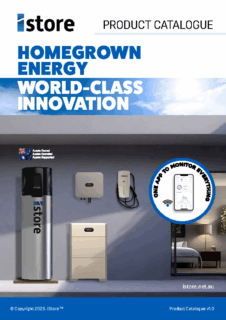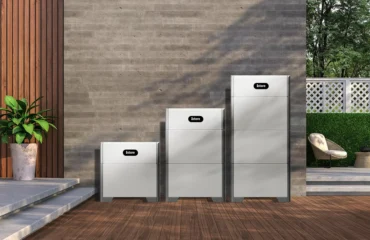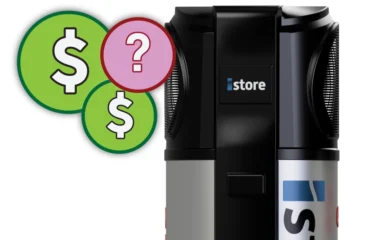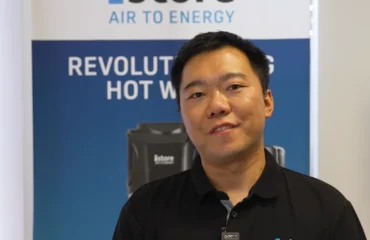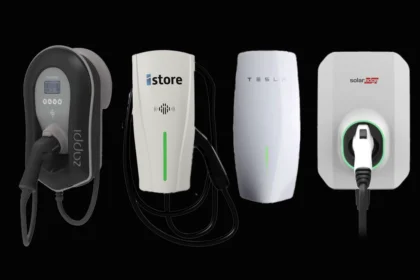
You’ve bought an electric vehicle. Bet you’re feeling pretty good about skipping the petrol station! But if you’re now stuck waiting in line at a public charging station, it’s a bit of a letdown, right?
The answer? An EV charger installed at your home or business.
Choosing the right EV charger can be overwhelming. Heaps of options. Confusing specs. And no clear answer on what suits your home, your business, or your daily driving routine.
This EV charger comparison guide cuts through the noise. We’ve compared top EV charger models to reveal the best EV charger with the speed, features, and value you need.
Why Choosing the Right EV Charger Matters
Choosing the right EV charger will make your life easier. You can charge faster, avoid long waits at public stations, and schedule charging during off-peak times when electricity rates are cheaper to save money.
Smart chargers come with built-in features like energy tracking, remote access via an app, and automatic scheduling, so you’re in complete control wherever you are.
Certain chargers are designed to work with certain setups. For example, some are made for homes with standard single-phase power, while others support faster charging through three-phase connections. If you have solar panels, you’ll want a charger that can sync with your solar system and charge your EV using excess solar energy.
With a smart charger, you can take this a step further, automatically prioritising solar power, tracking how much energy you’re using, and adjusting charging times to lower costs and reduce your reliance on the grid.
And don’t forget compatibility. Not every charger suits every EV model, so it’s important to pick one that’s a good match for your car and your home or business power supply. A little research now means fewer headaches later and more reliable charging every time you plug in.
Types of EV Chargers – A Quick Overview
Level 1 Chargers
Level 1 chargers are the most basic charger type and usually come included with your EV. They plug into a standard 240-volt (V) household power point and deliver around 2.4 kW of power.
That translates to slow charging. You’re looking at around 14–24+ hours for a full charge, depending on your vehicle. It’s enough to top up overnight if you don’t drive far each day, but it’s not ideal for regular use or EVs with larger batteries.
These chargers are simple, portable, and cost nothing extra upfront. But if you want faster, smarter, or solar-compatible charging, you’ll likely outgrow a Level 1 charger quickly.
Level 2 Chargers
Level 2 chargers are the most popular choice for home and business use. They need to be hardwired or plugged into a dedicated circuit, usually using a 7 kW (single-phase) or 22 kW (three-phase) setup.
Charging is much faster than with a Level 1 charger. You can expect a full charge in 4–10 hours, depending on your EV and your power supply. They’re ideal for complete overnight charging or topping up during the day.
Many Level 2 chargers come with smart features like Wi-Fi connectivity, energy monitoring, scheduling, and solar integration. They’re compatible with most EV models and offer a more reliable, long-term solution for regular charging at home or work.
DC Fast Chargers
Most homes and businesses supply AC (alternating current), which needs to be converted to DC (direct current) because EV batteries only use DC power. With a Level 1 or 2 charger, the current is converted inside the car using its onboard inverter. With a DC fast charger, this conversion happens inside the charger.
This process speeds up charging, making DC fast chargers the fastest type of charger.
They offer high power output, typically ranging from 25 kW to 350 kW. Lower-powered models (around 25–50 kW) can give you a decent top-up in under an hour. Higher-powered units (150–350 kW) can charge some EVs from 10% to 80% in just 20–60 minutes, depending on the car’s battery capacity and charging capability.
DC fast chargers are used at commercial sites, fleet depots, and public charging stations. They’re more expensive to buy and install, and generally require three-phase power, advanced electrical infrastructure, and council approval. Most homes won’t support them, but for businesses, they’re a game-changer for fast charging turnaround.
Single-Phase vs Three-Phase EV Chargers
What power supply does your home or business have: single-phase or three-phase? The answer will affect the EV charger you choose. The terms refer to how electricity flows into your home or business.
Most homes in Australia have single-phase power. It’s suitable for everyday appliances and supports EV chargers up to around 7.4 kW. Three-phase power is more common in commercial buildings or large properties and can support higher-capacity chargers, up to 22 kW or more.
The main difference between single-phase and three-phase charging is speed. With single-phase, a typical charger will add about 25–40 km of range per hour, depending on your EV. With three-phase, charging speeds can jump to around 60–100+ km of range per hour.
In terms of cost, single-phase chargers are generally cheaper to install and more than enough for most home users. Three-phase chargers and the required wiring cost more but are faster and better suited for heavier daily use, such as in businesses, workplaces, or apartment blocks.
Still unsure? A licensed electrician can confirm your home or business’ power supply and determine if any upgrades are needed for three-phase charging.
Commercial and Home EV Charger Comparison Table: Top 5 Models
| Charger Model | Power Output | Approx. Charging Speed (Full Battery) | Approx. Range Added | Features | Pros | Cons |
| iStore | 7.4 kW (single-phase) / 22 kW (three-phase) | 6–10 hrs at 7.4 kW and 2–4 hrs at 22 kW | 10–15 km/hr (7.4 kW) and 30–120 km/hr (22 kW) | App control, works with solar, balances power use, 3-year warranty | Scheduled charging, strong safety features (including internal overheating sensors), long cable included | None! |
| Zappi | 7 kW / 22 kW | 3–9 hrs | 40–100km/hr | Designed and made in the UK with an Australian office and support, OCPP compatible (can take advantage of third-party software applications) | Great for solar homes and businesses, lots of charging modes, eco-friendly features | More expensive than other chargers on the market |
| Evnex | 7.4 kW / 22 kW | 3–10 hrs | 50–120 km/hr | Local company with products manufactured in New Zealand, adjusts charging based on power use | Integrates with any solar system, easy to operate, one of the only models that comes with a built-in 4G SIM, making installation and connection straightforward | No option for an untethered single-phase residential charger (there is an untethered commercial single-phase charger), cannot connect to third-party apps |
| Ocular | Single phase / Three-phase | 6–8 hrs | 40–140 km/hr | Adjustable charging speeds, built-in Wi-Fi for remote monitoring, smartphone app control | Simple and affordable, charging control and tracking | No built-in display, not compatible with solar |
| Tesla Gen 3 | Single phase / Three-phase | 5–13 hrs | 38–60 km/hr | Wi-Fi connection, app control, customisable faceplate colour | One of the cheapest chargers on the market, extra-long cable, durable against environmental conditions | No Open Charge Point Protocol (OCPP), which allows chargers to communicate with charging management software, regardless of brand, no load balancing capability, no LCD screen to display charging status |
Key Features To Look For in an EV Charger
When choosing an EV charger, it’s not just about speed.
Here are the key features to keep in mind.
- Durability: Look for a charger that can handle Australian conditions—heat, rain, and everything in between. For outdoor setups, weatherproof casing is essential.
- Compatibility: Make sure the charger works with your EV model and your power setup (single-phase, three-phase, or solar). Also, consider how you want to connect the charger to your car; some are tethered, with a cable attached, while others are untethered, so you’ll need to use the charging cable that came with your EV and plug it into the charger each time.
- Integration with Solar Systems: If you have solar panels, pick a charger that can sync with your system. The best ones let you prioritise solar power, helping you save money and reduce grid reliance.
- Smart Capabilities: Many chargers now come with apps that let you schedule charging during off-peak hours, monitor energy use, or receive software updates automatically. Some also support load management to avoid overloading your home or business’ power.
- High Capacity for Multiple Vehicles: If you’re running a fleet or offering public charging, look for chargers that can support multiple vehicles at once or work together using power-sharing features.
- Payment Integration: For customer use, choose a charger with built-in or add-on payment options like RFID cards, tap-and-go, or mobile apps. These make charging simple and trackable.
- Warranty and Support: A solid warranty (ideally 3 years or more) gives peace of mind. Also, check that the brand offers local support and installer access if something goes wrong.
FAQs
What Are the Best EV Chargers on the Market?
The best EV charger is one that is reliable, compatible with your vehicle, and suitable for your power setup: single-phase, three-phase, or solar. It should offer smart features like app control, scheduled charging, and energy monitoring, and be designed to handle Australian climate conditions.
For businesses, top choices also include options for multiple vehicles, user access control, and payment systems. The right choice depends on your specific needs, budget, and location.
How Do Level 1 and Level 2 EV Chargers Compare?
Level 1 chargers plug into a regular power point and are slow, taking up to 24 hours for a full charge. Level 2 chargers use a dedicated circuit and are much faster, usually charging a car in 4 to 10 hours.
What’s the Difference Between Single-Phase and Three-Phase EV Chargers?
Single-phase chargers are common in most homes and offer charging speeds up to 7.4 kW. Three-phase chargers are faster—up to 22 kW—and are often used in businesses or larger properties with three-phase power.
The main difference between these chargers is how quickly they can charge an EV: around 4–10 hours with single-phase compared to 2–4 hours with three-phase, depending on the vehicle’s battery size.
Do Faster EV Chargers Cost More?
Yes, faster EV chargers generally cost more. Higher charging speeds require more advanced hardware, and installation can be more complex, especially for three-phase or DC fast chargers. However, the extra cost can be worth it for quicker charging and better convenience.
Choose the Perfect EV Charger with iStore
We’re sure our EV charger comparisons have given you food for thought and a jumping off point. But no doubt, you still have questions about which EV charger will be best for your specific circumstances.
iStore is here to help!
Our EV charger experts can answer your questions, point you in the right direction, and provide you with a quote.
We supply two EV charger models to suit various charging needs.
- 7.4 kW 230 V AC 1-Phase EV Charger: Offers overnight charging using a standard single-phase power supply. Ideal for everyday EV use and suits most Australian household energy setups.
- 22 kW 400 V AC 3-Phase EV Charger: Delivers much faster charging to larger EVs, multiple vehicles, or commercial vehicles. Designed for larger homes or businesses with a 3-phase power supply.
Browse the best single-phase EV charger in Australia AND the best 3-phase EV charger in Australia from iStore, then get in touch by calling 1300 515 640 or filling out this online form.

